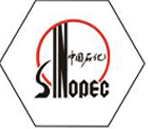
Dec . 24, 2024 10:15
Back to list
Pressure Reduction Techniques for Improved Performance in Various Applications
Understanding Pressure Reducing Valves and Their Importance
Pressure reducing valves (PRVs) play a crucial role in various industrial applications, ensuring that the pressure of fluids is maintained at safe and efficient levels. These devices are essential in managing the flow of liquids and gases within pipelines, safeguarding equipment and enhancing system performance. This article delves into the mechanics of pressure reducing valves, their applications, and the benefits they provide in different sectors.
What is a Pressure Reducing Valve?
A pressure reducing valve is a type of control valve that automatically reduces the input pressure of a fluid to a desired output pressure. This regulation is vital in preventing damage to equipment that may occur due to excessive pressure and in ensuring that processes run smoothly and efficiently. PRVs are designed to maintain a consistent downstream pressure, regardless of fluctuations in upstream pressure.
How Do Pressure Reducing Valves Work?
The operation of a pressure reducing valve is relatively straightforward. When fluid enters the valve, it is forced through a throttling mechanism, which reduces its pressure. This is typically achieved through a spring-loaded diaphragm or piston. When the downstream pressure exceeds the preset level, the valve closes slightly to reduce flow and regulate pressure. Conversely, if the downstream pressure drops, the valve opens to allow more fluid to flow through, thus maintaining the desired pressure.
There are various designs and configurations of PRVs, including direct acting, pilot-operated, and electronically controlled valves, each suited for specific applications and pressure ranges.
Applications of Pressure Reducing Valves
.
2. Industrial Processes Many manufacturing processes require precise pressure control. PRVs are used in chemical processing, food and beverage manufacturing, and pharmaceutical production to ensure that equipment operates within safe pressure limits, optimizing efficiency and safety.
مزلقة تخفيض الضغط

3. Heating Systems In heating applications, such as steam systems, PRVs are crucial in controlling the pressure of steam before it enters the heating equipment, preventing potential damage and ensuring consistent heating.
4. Hydraulic Systems In hydraulic machinery, pressure reducing valves help manage fluid pressure, which can be vital for the functionality of hydraulic actuators and motors, ensuring they operate smoothly without exceeding pressure limits.
Benefits of Pressure Reducing Valves
The advantages of using pressure reducing valves are numerous
- Protection of Equipment By preventing excessive pressure in systems, PRVs protect pumps, pipes, and other equipment from damage, thus reducing maintenance costs and downtime.
- Energy Savings Regulating pressure can lead to more efficient system operations, as reducing pressure losses often translates into energy savings. This is particularly important in larger industrial applications where energy consumption can be substantial.
- Improved Safety Maintaining safe pressure levels reduces the risk of accidents and catastrophic failures that can occur due to overpressure, enhancing workplace safety.
- Operational Efficiency Consistent pressure levels lead to more reliable system performance. This is crucial in processes that require specific conditions to function optimally, ultimately improving productivity.
Conclusion
In conclusion, pressure reducing valves are an indispensable component of modern fluid control systems. Their ability to maintain optimal pressure levels not only protects equipment from damage but also contributes to improved efficiency and safety in various applications. As industries continue to evolve and demand higher levels of performance and reliability, the importance of PRVs will only increase. Investing in quality pressure reducing valves and ensuring they are properly maintained is essential for any business that relies on fluid dynamics for its operations. Understanding their functioning and applications empowers operators and engineers to make informed decisions that optimize safety and efficiency in their systems.
Latest news
-
Safety Valve Spring-Loaded Design Overpressure ProtectionNewsJul.25,2025
-
Precision Voltage Regulator AC5 Accuracy Grade PerformanceNewsJul.25,2025
-
Natural Gas Pressure Regulating Skid Industrial Pipeline ApplicationsNewsJul.25,2025
-
Natural Gas Filter Stainless Steel Mesh Element DesignNewsJul.25,2025
-
Gas Pressure Regulator Valve Direct-Acting Spring-Loaded DesignNewsJul.25,2025
-
Decompression Equipment Multi-Stage Heat Exchange System DesignNewsJul.25,2025

